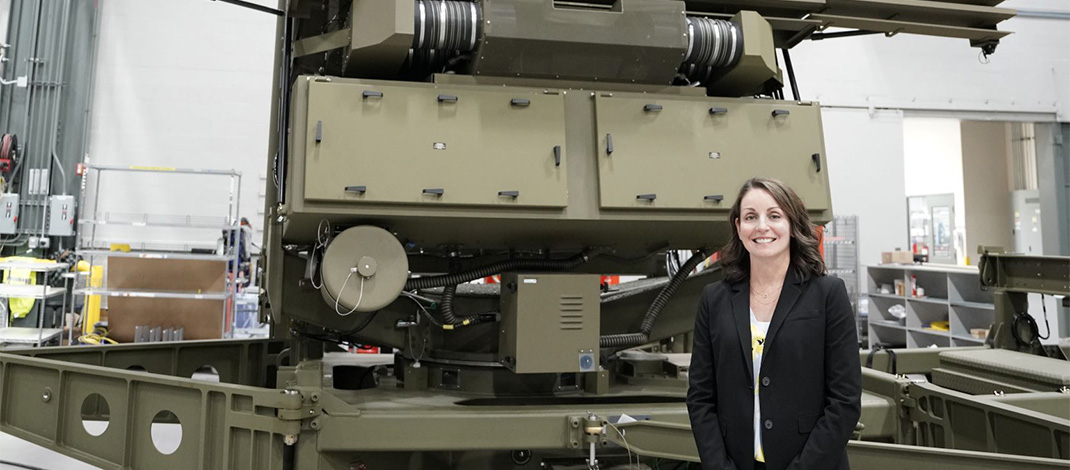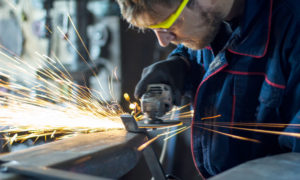From metal fabrication to radars and sensors to commercial printing, the following women are helping shape, strengthen and redefine manufacturing in Central New York
Vice president of radars and sensors systems, general manager at Lockheed Martin
Vice president of radars and sensors systems at Lockheed Martin, one of the nation’s leading defense contractors, Chandra Marshall is also the general manager of the corporation’s Syracuse site in the town of Salina.
Splitting her time between Syracuse and New Jersey, she oversees a division in Morristown; her workforce numbers approximately 2,800 full-time employees and subcontractors at both locations; and she manages a budget of at least $1.5 billion. She has been with Lockheed Martin for about 20 years and in her current role for the last 1 1/2 years.
Her work also includes the management of the orders, sales and earnings before taxes and interest (EBIT) for the radar work, and some investment work at the Syracuse location, employee morale, retaining and recruiting talent, and participating in diversity activities within the organization.
The local plant manufactures electronic components that are used in radar, electronic warfare and sonar products on platforms in the air, on land and at sea. In conjunction with the manufacturing work at the plant, there is electrical and mechanical engineering; software development; quality engineers; contracts fields; international export; global sustainment, which is making sure customers are supplied with necessary spare parts and repairs; and supply chain, securing the materials needed to construct the equipment. It’s an area that, Marshall said, represents about 70% of the $1.5 billion budget.
Over the past couple of years, Lockheed Martin was awarded two major defense contracts — the Sentinel A4 program and the three-dimensional expeditionary long-range radar, or 3DELRR program — that Marshall said will provide the company with production work for decades to come.
“Our job as leaders is to make sure we keep that factory full,” she said. “It allows us to have a nice, even cadence of production in the factory.”
With technology always advancing and global affairs constantly shifting, the work is demanding.
“It’s definitely a challenge from a technology perspective to make sure that what we’re building will keep pace with the threat that keeps changing,” she said. The software that is created allows them to upgrade equipment and keep pace without having to change out the actual hardware, which can be costly, time-consuming, and in some instances, unsafe to take equipment offline while making repairs.
In order to keep her teams up-to-date, she has quarterly “all-hands” meetings, during which, she said, addresses the newest developments, customers’ concern, the threats, and how they’re doing. She also does quarterly webchats with employees, and quarterly “Chat with Chandra” sessions, in which she blocks off half her day, and people sign up for 15-minute slots when they can talk with her. The chats allow her to reach out to more people than she would be able to do otherwise.
Marshall said that her background is a little unique for Lockheed Martin. She studied law for a while, earned a degree in political science, a master’s in public administration, and worked as a finance analyst for the New Jersey Office of Management and Budget.
However, in 2000, she said, Lockheed Martin was growing significantly internationally and had many opportunities. With legal background, she joined the organization in its export control business, helping to put in place the policy required to sell products internationally. From there, she went to the contracts organization, which also tied in with her legal experience. She then went into program management, and continued in different roles and responsibilities in that area. She also ran quality organization within the Integrated Warfare Systems and Sensors line of business.
With many members of her family in the military, she said she “jumped at the opportunity to join Lockheed Martin.”
“I always tell people this is my way of giving back for the men and women that are out there every day,” she said.
While her work in different programs throughout the company enabled her to learn its various aspects of the business, she credits her rise through the corporation, in large part, to good mentors she’s had along the way.
“Without that mentorship I probably wouldn’t be where I am today,” she said. “Growing up in this organization, I’ve always made it a point to mentor younger female engineers, to make sure that I was following their careers, advocating for them in different positions, and guiding them with their career and where to go.”




